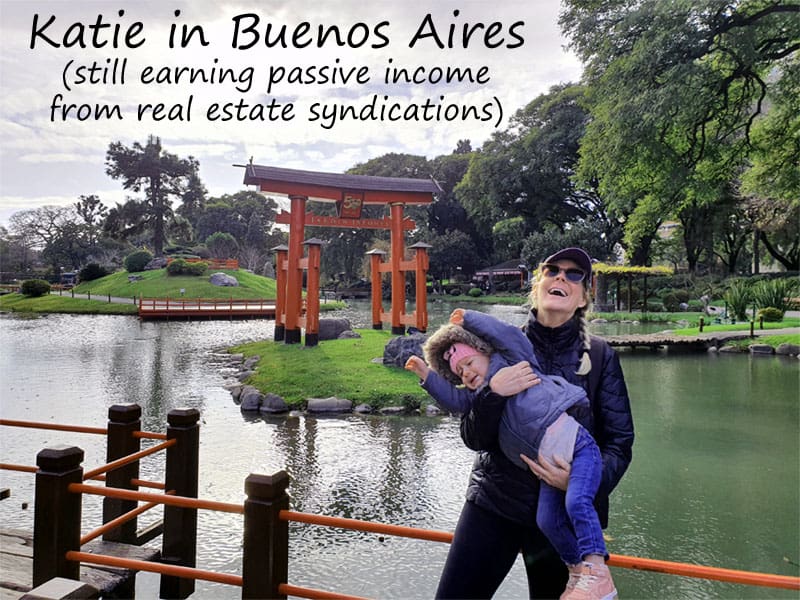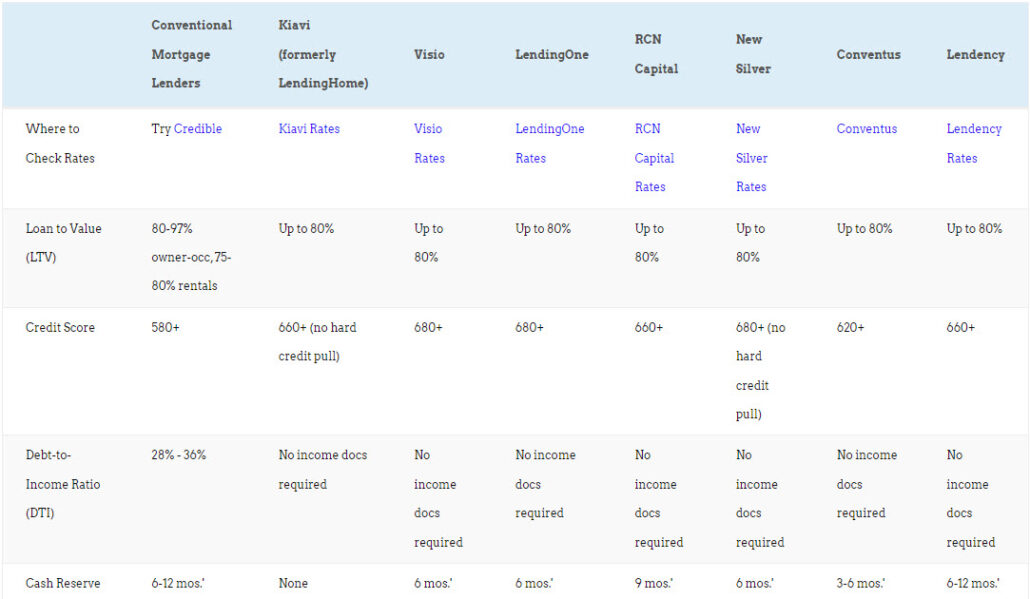
We send out a monthly update about all the past deals we’ve invested in through our Co-Investing Club. Most of the real estate syndication projects are doing fine. A few have narrower cash flow than forecast, due to soaring interest rates, and have delayed starting distributions. I can live with that, even if I don’t love it.
But one deal in particular has completely imploded. In our latest monthly email update to our Club members, I described it as a “Case study in how things can go wrong on a deal, and a reminder that these deals come with very real risk.”
One of our Club members emailed me to ask if I’d write up an actual case study about it. To break down what went wrong, and what lessons we’ve taken away from the (terrible) experience.
After all, what better way to illustrate the risks of real estate investments than to dissect a deal that went bad.
Overview: The Real Estate Syndication Deal
Before we can break down what went wrong, you need to understand the original deal.
No, I can’t tell you who the sponsors are. Believe me, I’d like to, but one of the co-sponsors ranks among the largest sponsors in the industry, and we’re not looking to make an enemy for life. Or get sued for slander. Or libel rather, since this is in writing. Whatever.
What I can tell you is that between the sponsors, they’ve bought over 10,000 units. We found that quite reassuring at the time.
The deal is a portfolio of two apartment complexes in a major Florida city. In this particular submarket, the vacancy rate is only 5%, suggesting strong demand. The properties are located close to popular amenities and chain grocery stores and pharmacies.
Upon purchase, one property had an occupancy rate of 92%, the other an occupancy rate of 97%.
The sponsor planned to renovate the properties to boost rents, net operating income, and therefore the property values. Everything in the business plan looked good on paper. The sponsor already owned properties in this market, and planned to leverage “operational efficiencies by sharing staff from our other properties.” They planned to install low-flow toilets to save water, to add amenities like dog parks and playgrounds and barbecue areas.
In other words, it was a classic value-add multifamily real estate syndication.
The numbers looked solid on paper too. A projected cash-on-cash return of 10%, and an internal rate of return of 16%. An equity multiple of 2.0 (see this breakdown of terms in real estate investing if you’re not familiar with these). All standard stuff for value-add real estate syndications.
And none of it has happened.
What Went Wrong
First and foremost, the lead sponsor on the deal completely mismanaged it. They kept the cosponsors in the dark about how badly the property was performing. Eventually, the cosponsors discovered how dire the situation was, and ejected the lead sponsor from the deal.
By that point, the property had low occupancy rates and had seen terrible negative cash flow for months. The cosponsors fired the original property manager and hired a new one. Then they had to do all the dirty work of evicting the terrible tenants that the previous property managers had put and left in place.
Shocking no one, high interest rates have also proven a huge problem for the sponsors too. The sponsors borrowed the loan in early 2022, at a 4.5% interest rate for a two-year term and an optional one-year extension. They did buy an interest rate cap (although I don’t remember exactly what it was).
But with higher interest rates came higher cap rates and much, much tighter credit markets. The sponsors now find themselves unable to refinance the property.
Expenses have also risen far faster than rents for these two properties. Insurance premiums have exploded in Florida, rising over 100% over the last year for these two properties. Labor costs have also shot upward.
At last check, the sponsors have managed to restore occupancy rates to around 88%. And the properties are still nowhere near positive cash flow.
Lessons to Take Away from This Debacle
So what have we as a real estate investment club learned from all this?
1. Yes, You Can Lose 100%
The property doesn’t need to lose 100% of its value for you to lose 100% of your investment.
Remember, the lender gets paid first. If the sponsor borrows 75% of the purchase price, and the property drops 25% in value, you get none of your money back as a limited partner.
Actually, it’s worse than that. The total property acquisition costs add up to far more than the purchase price. The property might only drop 10% in value, and you can still lose your entire investment capital.
2. You Can Actually Lose More than 100%
When sponsors get in trouble and need money to bail them out, who do they turn to?
You.
They do a capital call, asking limited partners (LPs) like you and me to cough up more cash. And if we don’t hand it over, the sponsors are left with no good options.
They could try to borrow more money, at usurious rates. Or they raise capital from a private equity firm, which takes higher priority in the capital stack over the original LPs.
Or they could sell at a loss. In this particular case, the sponsor made it very clear that if they sell the property now, we’re all losing 100% of our money.
When the LPs refused to give the sponsor the money that they needed to try and stabilize this particular portfolio, they turned to trying to raise money from private equity investors. It remains to be seen whether they’ll get enough money, but even if they do, the best case scenario isn’t rosy.
In it, the sponsor stabilizes the cash flow as the first priority, so the properties aren’t bleeding money every month. Then they slowly start renovating units again, to gradually drive up rents and the net operating income. Eventually cash flow improves, and hopefully in a few years from now, cap rates drop back down and they sell for a profit.
Even then, we LPs may not get all or even some of our money back, because we’re so low on the priority list for repayment.
3. Scrutinize the Lead Sponsor
We didn’t invest money through the (shady and incompetent) lead sponsor. We invested through one of the several cosponsors of this deal. When we looked at the track records of the sponsorship team, we looked at two of the cosponsors.
Again, one of those cosponsors is a massive player in the industry, who’s done dozens upon dozens of deals. It gave us a false sense of security.
We never got ahold of the lead sponsor’s track record, never even talked to them. And, embarrassingly, none of us verified who the lead sponsor was.
It’s not a mistake we’ll make again.
Deals often have multiple sponsors, sometimes four or five. Find out who the lead sponsor is, and make sure you’re comfortable with them — not just the one or two cosponsors who you might already know.
4. Breakeven Occupancy Is a Forecast, Not a Fact
The sponsor told us that the breakeven occupancy for these properties was 66%.
“Wow, 66%, that’s super low! There’s no way the occupancy will drop that low, so this deal must be pretty safe.”
Even when the occupancy plummeted at these properties due to bungled management, it never fell below 66%. So how did the properties end up losing money?
Because all the other expenses went up faster than the rents.
That means the breakeven occupancy turned out not to be 66% at all. In fact, I asked the (now) lead sponsor on the deal what the current breakeven occupancy rate is. His answer: “Somewhere around 100%.”
Don’t put too much stock in breakeven occupancy rates. They — like every other forward-looking number in the investment deck — are forecasts. They’re based on calculations made by the sponsor. That makes them fallible at best and manipulated at worst.
5. Scrutinize the NOI & Expense Forecasts
Future cash flow and net operating income are based on two factors: rent growth and expense growth.
So, how fast are they forecasting rents to grow? And how fast are they forecasting expenses to grow?
Rents are actually dropping in some markets around the country right now. They’re certainly growing far slower than they were a year or two ago, even in growth markets.
Meanwhile, expenses have exploded. Insurance premiums in particular have shot through the roof, even in regions with little or no natural disaster risk. And inflation has sent labor costs sky high.
Do yourself a favor and cut the sponsor’s rent growth forecast in half, then double the expense growth forecast. Does the deal still generate acceptable returns? If not, look elsewhere.
6. Scrutinize the Financing Terms
In this particular deal, the sponsor only took out a two-year property loan.
Yes, they bought an interest rate cap. That said, I don’t remember what it was, or whether the projections were based on the current interest rate at closing or the maximum interest rate.
Regardless, a two-year loan just doesn’t give you any wiggle room if interest rates are high when the loan expires. Which, in this case, they absolutely will be. That leaves you stuck between the rock of refinancing at a crippling rate and the hard place of selling in a terrible market.
Our real estate investing club recently invested in a deal where the sponsor assumed an existing loan at a 4.2% fixed interest rate. The remaining term on the loan: nine years.
That made me feel far more warm and fuzzy about that deal than a short-term loan. If the worst happens, the market has abundant time to recover before the sponsor has to refinance or sell.
Ask the sponsor to run the numbers at the maximum interest rate cap. Check how many loans they’ve done with this lender, and how many times they’ve refinanced past deals. Ask whether the bridge lender ever slow-rolls their draws, refusing to release draws when requested.
And confirm they have deep relationships with lenders that can refinance them at favorable interest rates and loan terms if needed.
7. Ask Investor Communities About the Sponsor
In this Florida real estate deal, one of the sponsors is a heavyweight with an excellent reputation. They were recommended to me by someone I trust. And things still went wrong.
But I’m a member of several passive real estate investing communities, including both our own Co-Investing Club and Left Field Investors. Nowadays I ask entire communities about their experiences with sponsors. I ask them questions like:
-
- Has the sponsor ever done a capital call?
- Have they ever suspended distributions, or failed to start them when projected?
- How do you feel about their financing terms, their NOI projections, their return projections?
- What kind of returns and overall experiences have you had with them?
- How’s their communication?
Ask a community of investors and you’ll get a wide range of personal experiences. You go beyond brand name recognition. Some sponsors with big names have completely botched their real estate investments since early 2022 when interest rates took flight. I’ve been shocked to hear other limited partners’ direct experiences, once I started asking these sorts of questions.
Reputation is all well and good, but talk to people with direct experience and no ax to grind.
When Good Sponsors Go Bad
I love this quote by Warren Buffett:
“Only when the tide goes out do you discover who’s been swimming naked.”
Several of the biggest names in the commercial real estate syndication space have scrambled over the last year to cover up the fact that they’ve been skinny dipping. I can’t name them publicly (but we definitely name them in our Co-Investing Club), but we’ll never invest with these big-name sponsors again.
Can you always predict how a deal will perform? No. But some deals and sponsors do come with red flags — if you know how to look for them. Learn how to spot sponsors who are underwriting deals too loosely, who are borrowing high-risk loans.
Most of all, invest alongside plenty of other investors, and crowdsource your deal vetting. There really is more safety in numbers.♦
How do you vet passive real estate investments? What risks and red flags do you watch out for?
More Real Estate Investing Reads:
About the Author

G. Brian Davis is a real estate investor and cofounder of SparkRental who spends 10 months of the year in South America. His mission: to help 5,000 people reach financial independence with passive income from real estate. If you want to be one of them, join Brian and Deni for a free class on How to Earn 15-30% on Fractional Real Estate Investments.



























It’s unfortunate to see how even experienced sponsors can mismanage a deal to this extent. what a sobering case study.
Agreed Priscilla!
I appreciate the transparency in sharing this case study. As the author mentioned, talking to investors who have had direct experiences with a sponsor can provide valuable insights.
Thanks Jeff!
Uncomfortable but important to see. Appreciate you sharing this case study.
Glad it was helpful Josh.
Thanks for sharing Brian, syndication always scares me, especially in todays rate environment. I’m happy to stick with self-managed single family homes, where I have long term consistent debt on it. I’m sure I’ve missed out on some great opportunities but its ok. I hope things turn around and get better for all those involved!
Your case study raises some crucial points on due diligence. Are there specific red flags you wished you had noticed earlier in the deal?
The biggest is probably the loan terms. Today we’re much more cautious in reviewing deals’ financing.
Be careful with rent and expense predictions, understand financing terms, and get feedback from others for a safer investment.
Amen Matt!